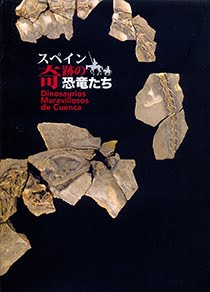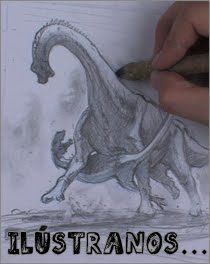Durante el XV Encuentro de Jóvenes Investigadores en Paleontología, que en esta ocasión se celebró en la localidad portuguesa de Pombal, Ane de Celis presentó una nueva filogenia calibrada de pinnípedos. Previamente se habían realizado tres filogenias calibradas de pinnípedos (Arnason et al., 2006; Highdon et al., 2007 y Fulton y Strobeck, 2010), pero en esta última década se han realizado importantes hallazgos de pinnípedos fósiles y se han desarrollado nuevas metodologías al respecto. Por tanto, era deseable crear una nueva filogenia calibrada que tuviese en cuenta estos nuevos hallazgos y metodologías (Heath et al., 2014).
Los resultados del trabajo datan el tiempo de divergencia de Pinnipedia respecto a Pinnipedimorpha en 33,5-25,2 millones de años (Oligoceno), mientras que los principales clados de Pinnipedia (fócidos, odobénidos y otáridos) divergieron durante el Oligoceno Superior - Mioceno Inferior. Por otro lado, los principales episodios de divergencia de estos clados de pinnípedos parecen coincidir con bajadas importantes de la temperatura global, cuestión que deberá estudiarse en mayor profundidad.
Aquí podéis consultar el resumen del trabajo:
Pinnipeds are semiaquatic carnivorous mammals with fin-footed extremities. Nowadays, there are thirty-three species of pinnipeds grouped in three clades: Odobenidae (walrus: one species), Otariidae (sea lions and fur seals: fourteen species) and Phocidae (seals: eighteen species). A significant proportion of these species are closely linked with cold climates around the globe. During the last decades, the study of their historical patterns of biogeographic distribution or their evolutionary history has raised considerable interest due to absence of consensus. The combination of molecular and palaeontological data, through the estimation of divergence times, represents an innovative approach to assess these large-scale questions. The palaeontological data used in these estimations are usually related to the estimated age of the earliest known fossils of different major clades. The fossil record of pinnipeds has grown during last years due to new discoveries. Some fossils that represent the earliest known record for major clades as Otariidae (Eotaria crypta Boessenecker & Churchill, 2015) or Monachinae (Afrophoca libyca Koretsky & Domning, 2014) have been described recently. Thus, all the previous works about divergence timing estimations in pinnipeds (Arnason et al., 2006; Higdon et al., 2007; Fulton & Strobeck, 2010), published before these discoveries, might not be congruent with the current pinniped fossil record knowledge. In addition, new methodologies to estimate divergence times have been developed (Heath et al., 2014). Therefore, attending to these facts, new analysis comprising these fossils and novel methodologies are required to obtain new divergence times at Pinnipedia, which is the aim of the present work.
To obtain a time-calibrated species phylogeny of Pinnipedia, a new model called "fossilized birth-death" process (Heath et al., 2014) was applied. This model, which works in a bayesian framework, allows the inclusion of all available fossils which phylogenetic position in major clades and age can be properly justified. The present study includes fifty-nine fossils, as well as the estimated age of the most recent common ancestor of ursids and pinnipeds (dos Reis et al., 2012), in order to calibrate the molecular phylogeny of twenty-nine modern pinnipeds. To get the molecular phylogeny, the complete nucleotidic sequences of three mitochondrial genes (cytochrome b, cytochrome oxidase subunit I and cytochrome oxidase subunit III) from the above mentioned modern pinnipeds, were used. The sequences were obtained from GenBank (www.ncbi.nlm.nih.gov) and the age of the fossils from the Paleobiology Database (www.paleobiodb.org). The bayesian estimation of divergence times was performed with the software BEAST v2.4.1 (Bouckaert et al., 2014).
As a result, a maximum clade credibility tree of extant pinnipeds, with 95% highest posterior density (HPD) intervals for nodal age, was obtained. The results show an Oligocene divergence time between pinnipedomorphs and pinnipeds (33,5-25,2 million years ago), coinciding with a glaciation event. The families Odobenidae, Otariidae and Phocidae appeared between the late Oligocene to the early Miocene (Chattian-Burdigalian). Finally, the subfamilies Monachinae, Phocinae, Odobeninae, and the still unnamed subfamilies of Otariidae, emerged from the middle to late Miocene (Langhian-Messinian); also coinciding with a drop in global temperatures. Hence, there seems to be a relation between global temperature drops and diversification events in pinnipeds, which should be studied in more detail. The divergence time estimates of the present work represent a midterm between the older average estimates by Arnason et al. (2006) or Higdon et al. (2007), and the younger average estimates by Fulton & Strobeck (2010). In addition, it is remarkable that the divergence date estimates of the present work seem to be in agreement with the currently available pinniped fossil record.
Through the use of the new "fossilized birth-death" process model, along with fifty-nine fossil calibrations, a secondary calibration and three mitochondrial sequences, new divergence date estimates for Pinnipedia have been obtained. These results can be used in further research about diversification drivers or other macroevolutionary studies in which this mammal group is involved, at least until new important fossil discoveries are reported or new methodologies appear.
-----
Más información:
- de Celis, A. 2017. Fossil calibrations and mitochondrial genes provide new data about divergence timing for pinnipeds (Carnivora, Pinnipedia). In: Barrios de Pedro, S. et al, A Glimpse of the Past. Abstract Book of the XV Encuentro de Jóvenes Investigadores en Paleontología/XV Encontro de Jovens Investigadores em Palentologia, Lisboa. 131- 134.




























No hay comentarios:
Publicar un comentario